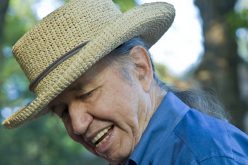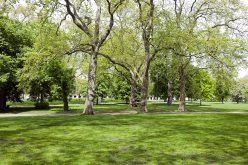“Eve” Chardonnay
Wine of the Week:
Charles Smith “Eve” Chardonnay
It’s going to be a hot one out there, so let’s talk about a beautiful wine style that can help us beat the heat.
Try a new wine this week!
Bruce
The world’s most famous white wine grape is capable of producing very different styles of wine when grown in different places, and when different winemaking techniques are applied. Let’s look at three of the most common styles, each available in different price ranges.
One word often seen on the backs of wine labels is “Burgundian” style. This is named for chardonnay’s original home, France’s Burgundy region. It’s a cooler climate, so most of the wines are more elegant, a product of less ripe grapes. The mineral laden soil also flavors the grapes, being drawn up by the vines’ roots. Crisp, elegant and complex would be three words often used to describe this style. Because the French originals are lighter, techniques such as fermenting in the barrels, and leaving the lees of the wine—some would call this the dregs—to remain in the barrel, are often used to add body and texture to the wine.
Many California wines are described as having a “New World” style, though there’s a lot of variety even within California. Speaking generally, it refers to a richer, riper, fuller style, with more concentrated fruit and less obvious tart acidity—some of which comes from a warmer climate. In some cases leaving the grapes on the vine longer to ripen more fully contributes to this style, and sometimes applying the Burgundian techniques mentioned above are used to achieve this extra richness. The flavor of the soil is not often a major factor in a wine described as “New World”.
 A somewhat similar style is the Tropical Fruit style of chardonnay. This is an unusual sounding name, most often used to describe chardonnays from parts of California’s Central Coast chardonnay, particularly those from southern San Luis Obispo County (Edna Valley) and northern Santa Barbara Country (Santa Maria Valley). An extended fall ripening period in those areas gets a lot of the credit for this. Grapes ripen slowly and completely there.
A somewhat similar style is the Tropical Fruit style of chardonnay. This is an unusual sounding name, most often used to describe chardonnays from parts of California’s Central Coast chardonnay, particularly those from southern San Luis Obispo County (Edna Valley) and northern Santa Barbara Country (Santa Maria Valley). An extended fall ripening period in those areas gets a lot of the credit for this. Grapes ripen slowly and completely there.
Until recent years, many chardonnays were given extra richness of texture (and less crispness), by a process called malolactic fermentation. It occurs naturally over time, but can be induced at the winery. Simply described, fruit acids that give some wines a green apple flavor (malic acid), is transformed into a softer, richer, less-tart-and-more-buttery acidity (lactic acid).
Food-wise, many people favor richer chardonnays with richer dishes (cream sauces, bisques, etc. while others say that a leaner chardonnay with crisp, tart acidity cuts through rich food. It’s fun to try both and see what you like best. In many cases, oak aging is used to add richness and complexity to a chardonnay. With elegantly styled wines, too much oak can overwhelm the fruit, resulting in a wine that is unbalanced. One that doesn’t is “Eve” Chardonnay, from Charles Smith Wines. Fermented in stainless steel, only 15% is aged in oak barrels, allowing the fruit to shine through. It retails in the $10-$15 dollar range.
Charles Smith’s “Eve” Chardonnay is from Washington State’s Columbia Valley. Its name reflects its crisp, appley flavors, similar to a Burgundian Macon (Pouilly-Fuisse, St. Veran, Macon-Villages, etc.)









